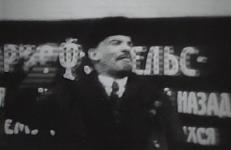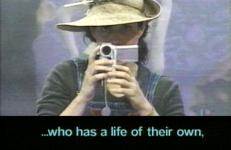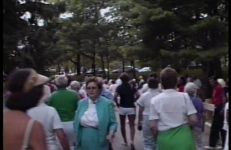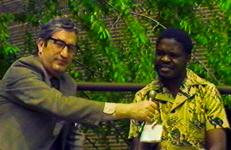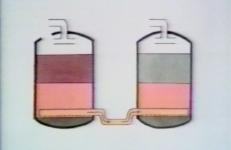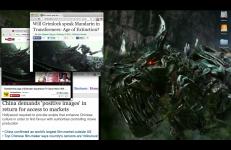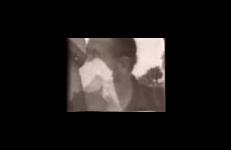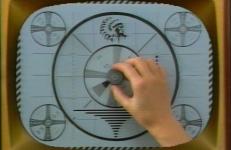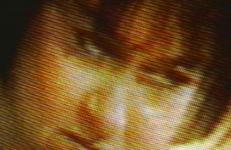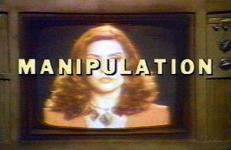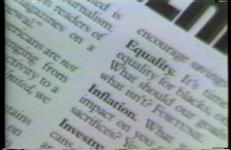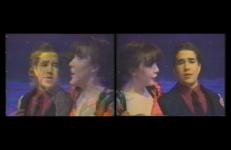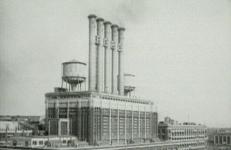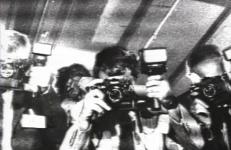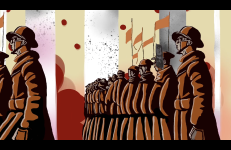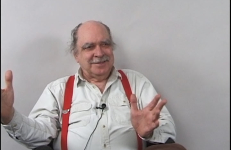Three Songs of Lenin is an 11-minute piece made from three one-second samples taken from the second song We Loved Him of Vertov's film Three Songs About Lenin. Building on Vertov's second song's structural use of moving and still images to articulate a dynamic of Lenin's passing from life to death, this video employs an algorithmic structure where every other frame is the first frame of the one-second sample. The 29.97 frame rate allows us to almost see moving and still images at the same time as an imagining of Lenin haunting the present.
Media Analysis
“Take back the airwaves: Mexico’s video art doyenne Ximena Cuevas books herself onto the tabloid talk show Tombola (Raffle), toying at first with whimsical deconstruction until she turns the whole affair on its head by seizing the televisual flow itself.”
Crowds line the streets for the wedding procession of Caroline Kennedy and Edwin Schlossberg in Hyannis Port, Massachusetts.
Shot and edited by Ligorano Reese
Online editor Rick Feist
Post-production by The Standby Program at Matrix
Addressing the imbalance of information flow between the wealthy and the destitute nations of the world, Towards A New World Information Order suggests means by which this imbalance might be rectified, including ways to control the press.
This tape is, in effect, a ready-made. Produced by the Pepsi Cola Company for its own use, it was accidentally substituted for one of my tapes in 1974. The mistake in the transfer was a communications mishap that involved a series of people and corporations... I wonder what accidents of this sort might reveal about secret channels of information. I see the material on this tape, innocuous as it may be, as a phenomenon that affects us without our being aware of its existence.
—Antonio Muntadas
Transformers: Age of Extinction, the fourth installment of the Transformers movie franchise directed by Michael Bay, was released June 27 2014. But for months ahead of the release, on YouTube one could already access an immense trove of production footage recorded by amateurs in locations where the film was shot, such as Utah, Texas, Detroit, Chicago, Hong Kong and mainland China. Transformers: the Premake turns 355 YouTube videos into a critical investigation of the global big budget film industry, amateur video making, and the political economy of images.
This tape was shot in August 1972 by the same crew that had convened for pioneer video collective TVTV’s (Top Value Television) project Four More Years. Videotaped at the 1972 Republican Convention, it begins with the cameraman taping from inside the press area, with protestors from the People’s Band outside at the fence. There is footage of girl- and boyscout groups. A group of protestors are shown calling for non-violent blockades of the delegates' entrance. Tear gas is feared, and there are interviews with tear-gassed people and medics.
In this interview, Los Angeles-based artist and filmmaker Ryan Trecartin (b. 1981) discusses his personal interests and motivations, as well as the larger cultural and philosophical concerns that shape his videos and their reception. Trecartin is known for his construction of non-linear narratives, campy costumes, and excessively visceral characters and environments. One of the most compelling aspects of this interview is his insistence that language and its verbal articulation, rather than the visual, anchor his process. Trecartin identifies the influences of 1990s retro-rave culture, hip-hop videos, and editing software tools on his work. He notes that the accelerated disintegration of high and low culture has played a major part in his growth as an artist.
Turn It On, Tune It In, Take It Over! is a portrait of freedom of expression at the dawn of the Electronic Age. The video was distilled from hundreds of hours of footage shot mostly in the early 1970s, using the first portable video format—the 1/2" open-reel, black-and-white, battery-operated, video Portapak. The piece recovers an almost lost and forgotten era of television history, when participation set out to conquer passivity, and when process was more important than product.
This feature-length experimental narrative, about women’s relationships to new reproduction technologies and genetic engineering, combines documentary interviews with field experts and a science fiction segment depicting stories of in-vitro fertilization and other methods. Underexposed: The Temple Of The Fetus examines ways the news media shapes perceptions and social attitudes towards medical topics.
TV's invasion of viewers' domiciles gets turned upside down in the video as a fan's (Millner) domestic life is superimposed onto the set of Roseanne, driving home unexpected reverberations as the nuclear family teeters on the edge of dysfunction. A schmooze-fest between Millner and Roseanne ends by detonating the UNcommon desire that both fan and star articulate, to GO TOO FAR. Note: This tape is a director’s cut of the version originally telecast as part of the PBS mini-series, Signal to Noise, about the videomaker’s obsession with Roseanne.
Playing back "visual quotations" of everything from Poltergeist to Blade Runner, Muntadas rescans the surface of the monitor, questioning the "nature" of media—film, television, video, and image. Television emerges as the medium to eat all mediums, raising the question: Is it possible,within the context of television, to tell art from life or fact from fiction? An endless row of generic TV monitors visually evokes a hall of mirrors as the expression of the cultural homogeneity and bland abundance achieved through the dominant medium of the late 20th century.
“Reading various popular magazines through the camera, the dominance of advertising over content becomes apparent as the same cigarette ads are consistently legible, while the various articles become a blur. A quick scan with no pause for reflection is the only reading possible of the rapidly turning pages. Muntadas asks whether magazines might be manufactured to be read as passively as television, questioning the consequences of active, or critical, viewing.”
— Mark Mendel, Muntadas: Media Landscapes (Andover, MA: Addison Gallery of American Art, 1982)
I made this piece within my first year of using Facebook. Dozens of people I’d thought I’d never hear from again were suddenly accessible to me in mystifyingly dynamic, flattened form. The cognitive dissonance wrought by this collision and collusion of past and present, distant and immediate, provoked me to dig out a strange artifact: a VHS compilation tape produced annually for three or four years at my high school. It was spearheaded by an A/V club teacher, produced by students, assembled via Amiga Video Toaster, and sound-tracked by corporate royalty-free music libraries.
Workers Leaving the Factory — such was the title of the first cinema film ever shown in public. For 45 seconds, this still-existent sequence depicts workers at the photographic products factory in Lyon, owned by the brothers Louis and Auguste Lumière, hurrying, closely packed, out of the shadows of the factory gates and into the afternoon sun. Only here, in departing, are the workers visible as a social group. But where are they going? To a meeting? To the barricades? Or simply home?
What are all of these photographers trying to capture, and just who is collaborating with whom? This short piece could be a take on fame and the cult of the personality — or a tourist portrait with the audience as subject.
This title is also available on Animal Charm Videoworks: Volume 1.
In this interview, communications theorist, Gene Youngblood (b. 1942) maps out the various stages of the development of video technology and its philosophical implications for human interaction. The range of topics discussed moves beyond video to offer an extensive and rich survey of American culture from the 1960s to the present moment. In addition to discussing his canonical text, Expanded Cinema, Youngblood shares stories from his early days as a police reporter for the Los Angeles Herald Examiner, where he gained intimate knowledge of the media’s politics of representation. With the acuity of hindsight, Youngblood discusses important self-discoveries, and his life-changing decision to move from the mainstream media into the world of the underground press.




